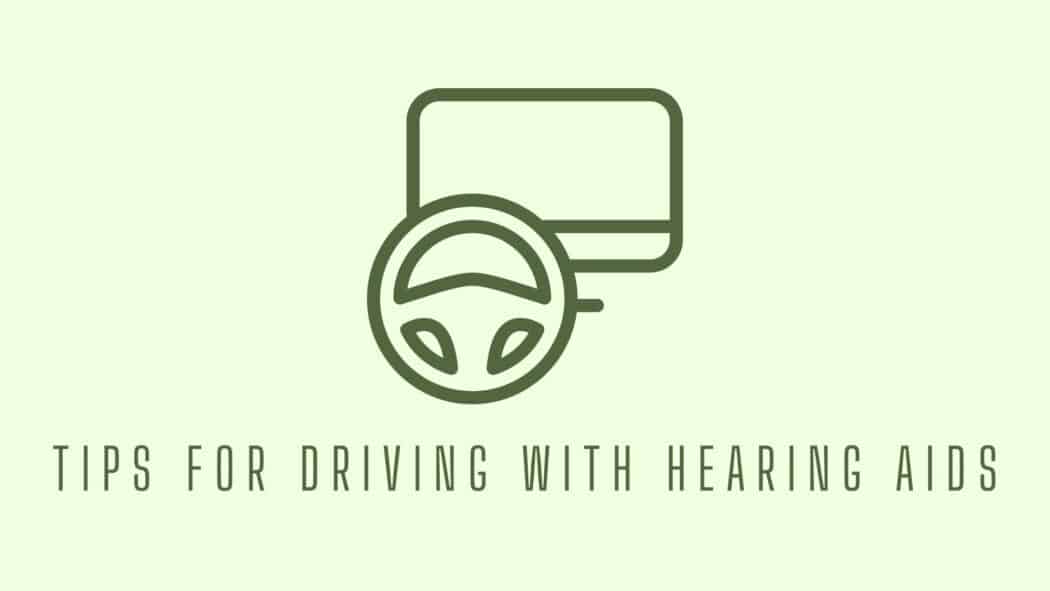Hearing is a major way we navigate public spaces. Whether walking or driving, hearing is critical to ensuring personal safety as well as the safety of others. Both visual and auditory senses play an important role in road safety. Hearing specifically allows us to identify hazards, emergencies, car issues etc. Being able to effectively hear these stimuli – sirens, horns, feedback from your car etc. – allows you to respond promptly. Making quick, decisive decisions is necessary sometimes while driving. Additionally, hearing increases spatial awareness which is essential for driving. For people with hearing loss, driving with hearing aids requires some initial adjusting. Integrating hearing aids, especially for first time wearers, requires retraining your auditory system which takes time. But after familiarizing yourself with your device, driving safely with hearing aids becomes comfortable. There are practices you can implement to maximize your safety while driving, including the following:
1. Adjust First
It takes time to adjust to wearing hearing aids. Unlike glasses for example, where you wear them and vision is instantly enhanced, there is a transition process for hearing aids. This is because you will likely hear sounds that you have not been able to hear in quite some time. Your brain is adjusting and getting familiar with these new stimuli. This can feel like sound overload at first as your auditory system retrains how it is absorbing and processing incoming sound information. It is important to take breaks and give yourself the time and space to get familiar with your hearing aids. You should start by wearing them in your living space so that you can more comfortably take in the new sounds and way of hearing. Once you feel fully comfortable and have also mastered using your device, start driving with your hearing aids.
2. Always Wear Hearing Aids While Driving
In the beginning, it is common to take breaks from wearing your hearing aids. Constantly processing new sounds can be tiring, so taking listening breaks while adjusting to hearing aids is normal. Once you are fully adjusted to your hearing aids and start driving, it is incredibly important to always wear your device. This allows you to stay as alert and spatially aware as possible which is necessary for safety while driving. Additionally, wearing your hearing aids is vital because your auditory system has to also become familiar with the types of sounds that you are exposed to while driving. This is part of retraining your hearing!
3. Reduce Background Noise
Remaining as focused as you can while on the road is really important. A major source of distraction can be background noise which creates even more noise that your brain has to filter through. Reduce noise as much as possible by maintaining (or eliminating) low volume settings if you are listening to audio, roll up the windows to reduce loud environmental noise, avoid talking on the phone while driving etc. These strategies are useful ways to stay alert and maximize your hearing capacity.
4. Avoid Multitasking
Another way people can be distracted while driving is when they try to multitask – eating, drinking, texting, talking on the phone etc. Engaging in these activities while also driving is not only distracting but can be dangerous. Avoid multitasking so that you can stay focused on driving and your environment. If you need to look up directions or make a phone call, pull over so that your awareness of the road is not compromised.
5. Prep Batteries
Be sure that your hearing aids are completely charged and ready to go before driving. Depending on the specific type of hearing aid you have, you should keep extra power sources in your car for backup. Keeping extra batteries or a portable charger in your car can be incredibly useful in the case of an emergency.
6. Maximize Sight
In addition to hearing, vision is also critical for driving safely. Vision becomes even more important as one another’s critical sense (hearing) is impaired. So maximizing sight is a useful way to also increase spatial awareness. To enhance sight, you can expand your range of view by using extended rear-view mirrors as well as cleaning your windows and windshield consistently.

